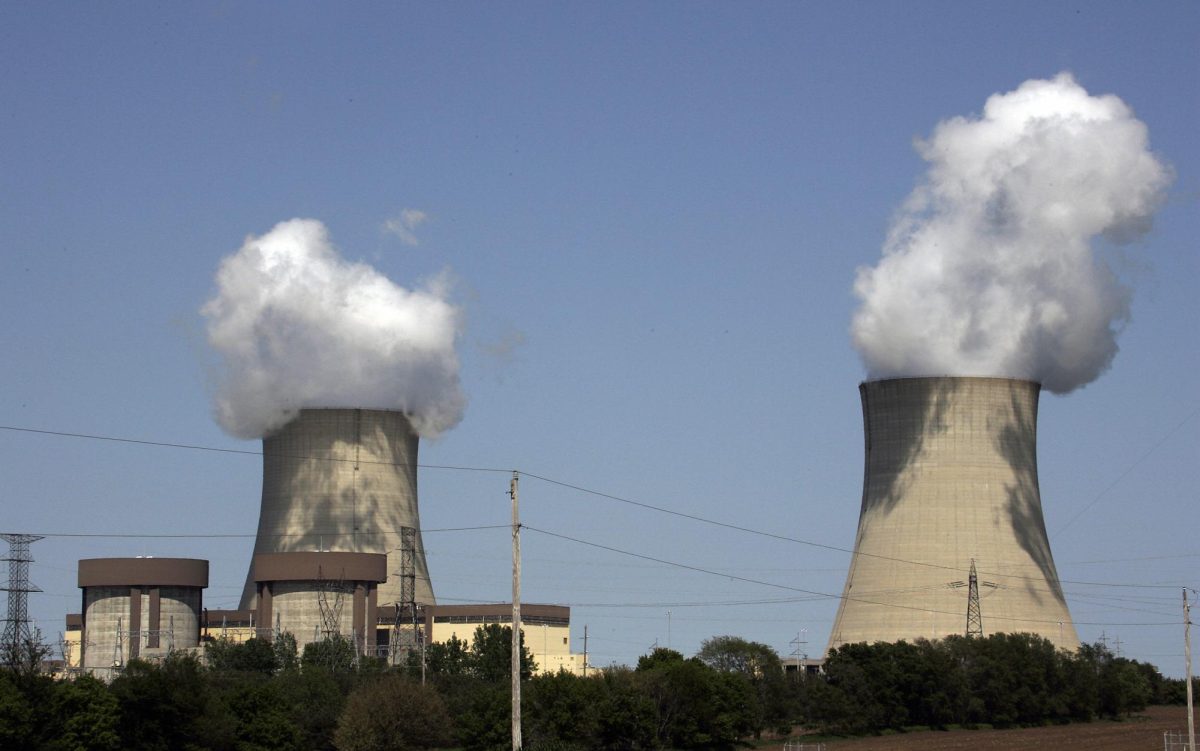Imagine trying to explain electricity to your great-grandparents. With just one cord, you can boil water, heat areas, cool areas, and access all the information ever compiled. They would assume you had magic powers. In Illinois, power is cheap and consistent, so we take it for granted and few give it a second thought. Through the power lines though, a significant amount of your power can be traced back to nuclear energy, a fact few Illinoisians know.
According to the International Atomic Energy Agency, nuclear power uses the heat from fission to boil water. Fission occurs when an unstable material (usually uranium) gets hit with a neutron and breaks down, generating heat. The water then turns into steam and flows through a turbine that turns an electric generator, creating electricity.
Illinois has a long history with nuclear power, believe it or not. The first ever sustained nuclear reaction famously occurred at the University of Chicago in the early days of the Manhattan Project. This “Chicago Pile-1” was a monumental moment in the history of nuclear development and only led to further research, culminating in nuclear power as the established force it is as today.
But why nuclear in Illinois? Co-sponsor of Verterra, Micheal Willuweit said: “I think Illinois is kinda cutting edge. We’re pretty advanced in trying new things. We put the investment in nuclear power.” Illinois currently has 6 total sites with 11 reactors operating according to the Energy Information Administration. The centralized nature of power production at these sites allows massive amounts of power to be generated despite the seemingly small total.
Nuclear has some clear advantages over other power generation techniques. “From the environmental standpoint it doesn’t really have a carbon footprint,” Willuweit said. This makes it environmentally beneficial, especially as opposed to the coal that was burned for electricity before nuclear was installed.
Illinois has far and away the most nuclear production of any state, at a whopping 52 percent of total power production in 2022 according to the EIA. It even overproduces and sends approximately one-fifth of the energy produced to other states. Overproduction also means the system is robust, as any energy needed can be provided. This leads to costs being driven down thanks to an abundance of supply, and reliability increasing.
High-profile accidents like Chornobyl, Fukushima, and Three Mile Island have soured public opinion on nuclear power as a whole. Concerns about nuclear waste and contamination are especially prevalent in public perception, but Illinois remains optimistic. “The waste it does produce is radioactive for a long time, but it’s easily contained,” Willuweit said. This supports the idea that nuclear waste isn’t a public health problem like some suggest.
Nuclear in Illinois still has a ways to go. According to WTTW, a bill was passed that allows for the new construction of power plants, but not all types. SMR’s, or Small Modular Reactors, are an emerging nuclear technology that has yet to reach America. Such plants would be significantly smaller and less powerful than any of the current locations, however, could potentially be cheaper and easier to set up and maintain, leaving lawmakers and citizens hopeful.
Overall nuclear power in Illinois is an established force in the energy sector. Its proponents claim it has led to clean, abundant, affordable energy for the state, while its detractors argue that it shouldn’t be developed more and it is handicapping future generations. One thing is for certain though: your great-grandparents definitely wouldn’t understand this either.





